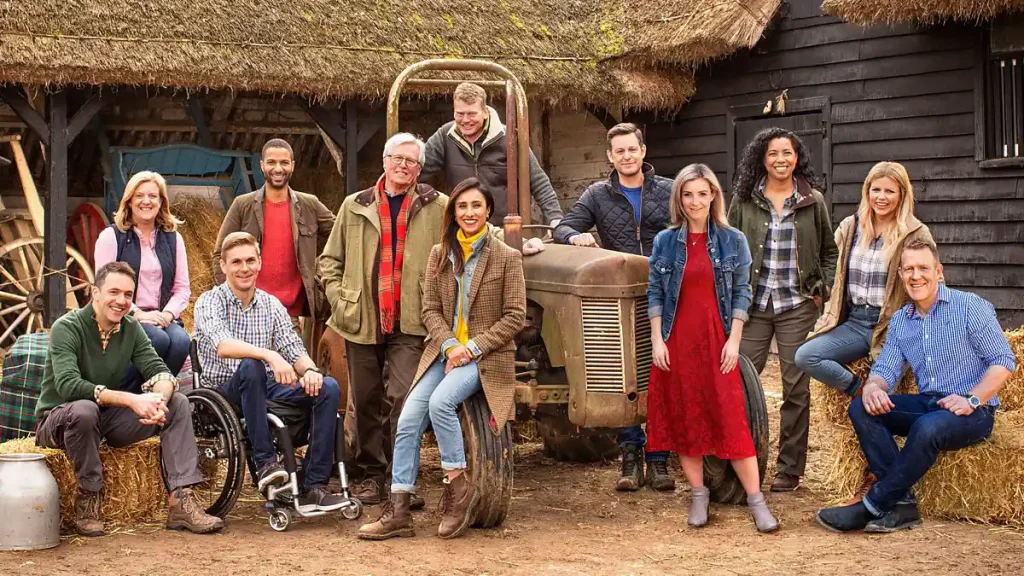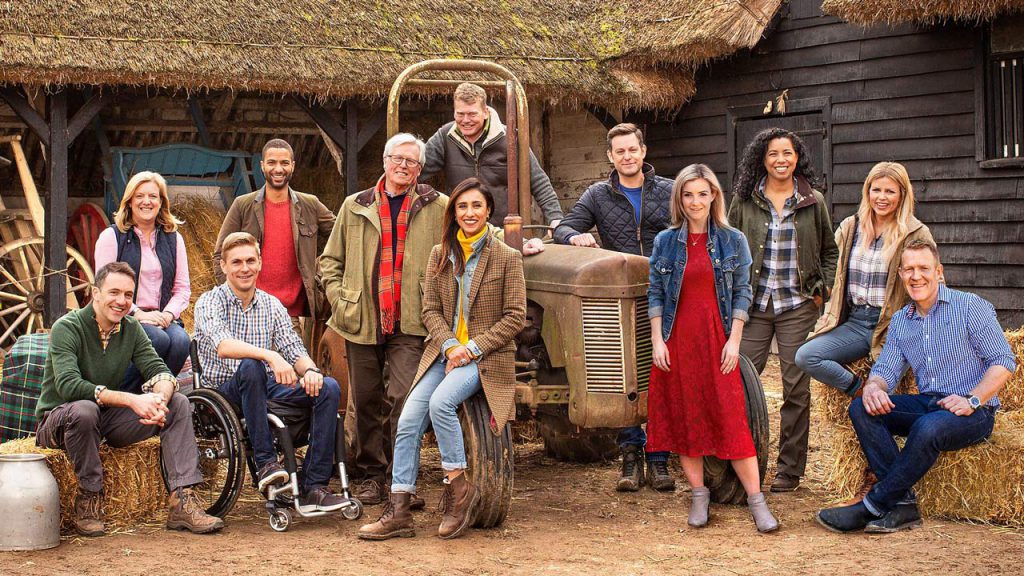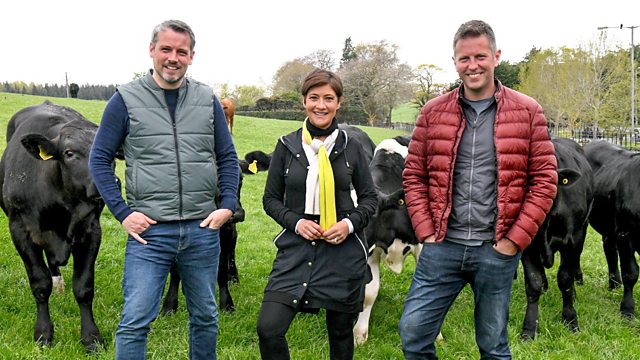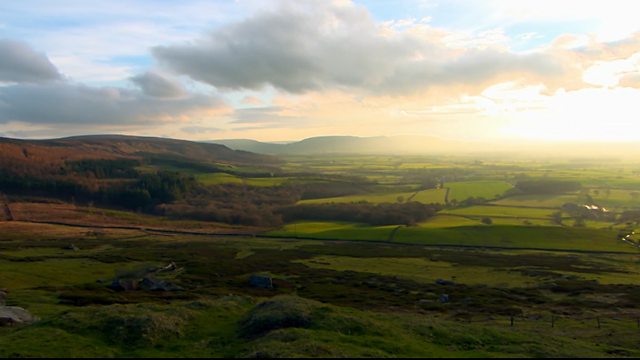Countryfile – Rutland – Sean Fletcher and Margherita Taylor embark on a captivating journey to Rutland, which holds the distinction of being England’s smallest county by area. Despite its modest size, Rutland is renowned for housing the country’s largest artificial lake, Rutland Water. This expansive reservoir serves as a vital resource for the driest region in the UK, spanning over four square miles and storing an impressive 110 billion liters of water. It plays a crucial role in supplying water to the East Midlands.
Rutland Water is not only a pivotal water source but also a sanctuary for diverse wildlife. The arrival of spring marks a significant time at the reservoir, as it becomes a bustling hub for migratory birds returning to the area. It is during this season that the landscape vibrates with the renewed life and activity of species such as ospreys. These majestic birds, once a familiar sight across England, faced extinction in the 19th century. However, through dedicated conservation efforts, including a successful breeding program, ospreys have made a remarkable comeback and have established a stronghold at Rutland Water.
Sean takes an in-depth look at the thriving bird population alongside a young, passionate osprey enthusiast. Together, they visit a secluded hide, eagerly anticipating the return of a notable female osprey known to have dominated a local nest since 2010. This encounter offers a unique opportunity to witness the ongoing revival of these magnificent birds in their natural habitat. Additionally, Sean explores other aspects of Rutland’s wildlife, focusing on some of the region’s rarest mammals, particularly bats. These nocturnal creatures find Rutland an essential stopover during their migratory journeys in the spring, relying on the area’s rich ecosystem for survival.
Meanwhile, Margherita explores a different facet of Rutland Water, delving into the history of the landscapes submerged beneath its waves. The creation of the reservoir required the flooding of previously dry land, which has since formed an underwater world rich in history and intrigue.
Elsewhere in the country, Charlotte investigates a growing concern in Devon related to the increasing prevalence of ticks in rural areas. These parasites, capable of carrying and transmitting various diseases, pose significant risks to livestock, wildlife, pets, and humans. Through her investigation, Charlotte uncovers the far-reaching impacts of tick-borne diseases and explores potential measures to mitigate these risks.
In another part of the country, Adam examines the effects of one of the wettest winters on record on the agricultural sector. He explores how excessive rainfall has influenced farming practices, crop yields, and the overall wellbeing of rural communities.
Together, these stories weave a narrative that highlights the challenges and triumphs of managing natural resources and wildlife in England today. “Countryfile – Rutland” not only showcases the beauty and resilience of Rutland but also casts a light on broader environmental and agricultural issues facing the nation.
Countryfile – Rutland
Discover Rutland: England’s Enchanting Small County
Rutland, often referred to by its ancient name, Rutlandshire, is a picturesque ceremonial county nestled in the East Midlands of England. It is bordered by Leicestershire, Lincolnshire, and Northamptonshire. Despite being the smallest ceremonial county in England, Rutland boasts a rich history, diverse geography, and a vibrant community, encapsulated by its motto, “Multum in Parvo” (Much in Little).
A Brief History of Rutland
Early Settlements and Historical Development
Rutland’s history is marked by early Anglian settlement in the 5th century, becoming a part of the Mercia kingdom. Its name, derived from the Old English “Roteland”, points to its historical owner, Rota. The county emerged in records around 1179, with its distinctive identity further solidified by the establishment of the High Sheriff in 1129 and the Lord Lieutenant in 1559.
Rutland’s Ceremonial and Administrative Evolution
Initially a part of various regions, Rutland has undergone significant administrative changes over the centuries. It was absorbed into Leicestershire in 1974 under the Local Government Act but reclaimed its status as a unitary authority in 1997, emphasizing its unique identity within the region.
Geographical Highlights of Rutland
The Charm of Rutland Water
Central to Rutland’s geography is Rutland Water, one of Europe’s largest artificial lakes, created in the 1970s. This significant water body not only supports local wildlife but also offers numerous recreational activities, making it a popular tourist destination.
Natural Landscapes and Biodiversity
Rutland is characterized by rolling hills and fertile lands, contributing to its primary industry, agriculture. The highest point, Cold Overton Park, offers panoramic views of the scenic landscapes that define this quaint county.
Economy and Lifestyle in Rutland
Key Industries and Employment
The economy of Rutland is predominantly driven by public administration, education, health, and agriculture. Significant local employers include the Ministry of Defence bases and public schools like Oakham and Uppingham.
Community and Culture
Despite its small size, Rutland is vibrant and community-oriented, marked by high levels of social activity and participation in sports and cultural events. The county is known for its high fertility rates and has been recognized as one of the happiest places in the UK.
Transportation in Rutland
Despite its small geographical size, Rutland is well-connected. The East Coast Main Line passes through its northeast corner, and recent developments have improved direct rail services to London. The county also pioneered a public electric vehicle charging network, reflecting its commitment to sustainable development.
F.A.Q. about Countryfile – Rutland Episode
Q.: What is “Countryfile – Rutland” about?
A.: “Countryfile – Rutland” features Sean Fletcher and Margherita Taylor exploring Rutland, the smallest county in England, known for its significant natural and cultural heritage. The episode highlights Rutland’s geographic and ecological importance, particularly focusing on Rutland Water, England’s largest artificial lake, and its role in supporting both the local environment and community.
Q.: Why is Rutland Water significant in this episode of Countryfile?
A.: Rutland Water is central to the episode due to its ecological and recreational importance. It serves as a major water supply to the East Midlands and acts as a sanctuary for wildlife, including a successful osprey breeding program. The segment explores how this reservoir impacts the local biodiversity and the conservation efforts to maintain this crucial habitat.
Q.: What wildlife conservation efforts are highlighted in the “Countryfile – Rutland” episode?
A.: The episode showcases the conservation initiatives around Rutland Water, especially the osprey breeding program which has helped reintroduce this once-extinct bird species in England. Viewers learn about the habitat management and protection measures that have enabled the ospreys and other migratory birds to thrive in Rutland.
Q.: How does the episode explore the history and culture of Rutland?
A.: Margherita Taylor delves into the submerged history beneath Rutland Water, revealing how the creation of this reservoir transformed the landscape and local heritage. This part of the episode provides insights into the changes brought about by the reservoir’s construction and its impact on the surrounding areas and communities.
Q.: What are the broader environmental and agricultural issues discussed in the “Countryfile – Rutland” episode?
A.: Beyond Rutland’s local concerns, the episode addresses broader environmental and agricultural challenges facing England. It includes segments on the increasing prevalence of ticks in Devon and their risks to public health and livestock, as well as the impacts of one of the wettest winters on record on farming practices and crop yields across the country.




